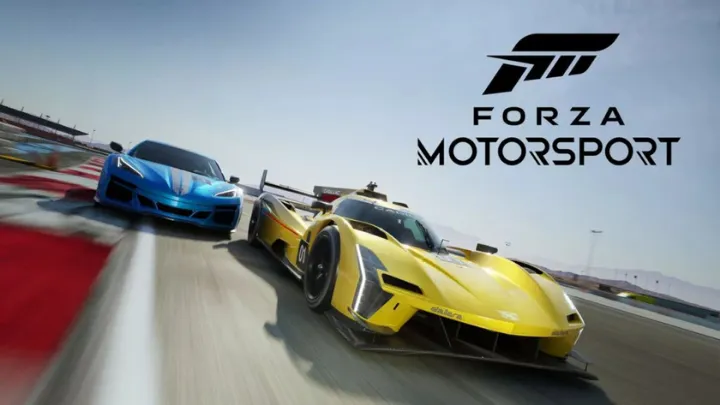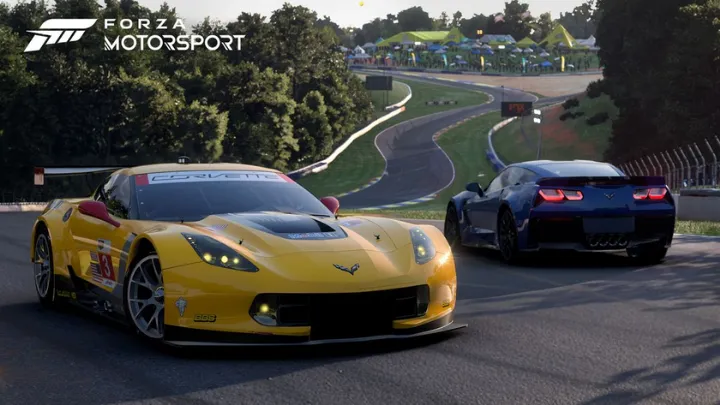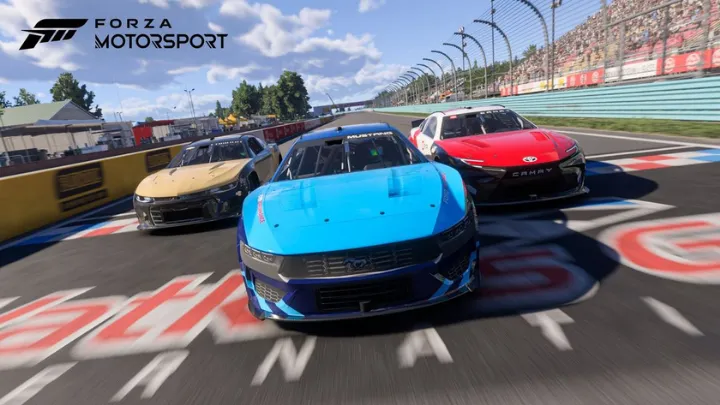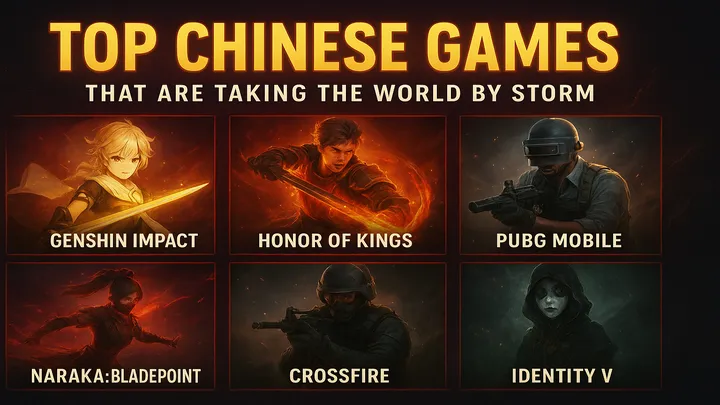Forza Motorsport, a name synonymous with precision racing simulation, has captivated car enthusiasts and gamers alike for generations. It’s more than just a game; it's a deep dive into the physics of driving, the art of car tuning, and the competitive world of motorsport. Whether you're a newcomer just getting your feet wet or a seasoned veteran looking to shave those crucial tenths of a second off your lap times, mastering Forza Motorsport requires a combination of skill, knowledge, and dedication. This guide will walk you through the fundamental steps to becoming a force to be reckoned with on the virtual asphalt.
The journey to becoming a Forza champion is not about one single trick, but a series of interconnected skills built upon a solid foundation. From the moment you select your first car to the intense final lap of a competitive race, every decision, every input, and every adjustment matters. This article serves as your roadmap, providing the 'how-to' knowledge you need to navigate the intricate world of Forza Motorsport. We will cover everything from the basic controls and driving lines to advanced tuning and race strategy, all designed to help you elevate your game.
 How to Choose Your First Car and Understand its Class
How to Choose Your First Car and Understand its Class
The first decision you make in Forza Motorsport is arguably one of the most important: selecting your first car. This choice sets the tone for your initial experience and dictates how quickly you'll adapt to the game's physics. While it's tempting to jump into a supercar, it's often more beneficial to start with a more manageable vehicle. A lower-powered, front-wheel-drive or rear-wheel-drive car will allow you to learn the nuances of weight transfer, braking points, and throttle control without the risk of being overwhelmed by sheer speed. The game's career mode often guides you through this, but even in free play, a sensible choice can make a world of difference.
Understanding the car class system is crucial. Forza Motorsport categorizes vehicles into performance classes ranging from D to S and beyond, based on their Performance Index (PI). This PI is a single number that represents a car's overall capability, taking into account its power, weight, grip, and more. When building a car or entering a race, the class limitations are a key factor. A well-tuned car in a lower class can often outperform a poorly-tuned one in a higher class, highlighting the importance of strategic upgrades.
How to Master the Basics of Driving and Racing Lines
Before you can be fast, you have to be consistent. The foundation of all good racing is a solid understanding of the racing line. The ideal racing line is a path on the track that allows you to carry the most speed through a corner, minimizing the total time to complete a lap. It's often visualized as an 'in-out-in' path: entering a corner from the outside, hitting the apex on the inside, and exiting back towards the outside. The game's optional driving line assist is a fantastic tool for learning this, but the goal is to internalize the line so you can drive without it.
Beyond the racing line, mastering the holy trinity of racing - braking, turning, and accelerating - is paramount. You must brake in a straight line before a corner, turn in smoothly while gradually releasing the brake (trail braking), and then apply the throttle progressively as you exit the turn. Over-braking or over-accelerating will lead to loss of control, tire wear, and slower lap times. Learning to "feel" the car's grip through the controller feedback is a skill that develops over time and is key to pushing the limits.
How to Navigate the Game's Physics and Assists
Forza Motorsport prides itself on its realistic physics engine, but for new players, this can be a steep learning curve. The game simulates a wide range of factors, including tire grip, weight transfer, and aerodynamics. Understanding how these elements interact is the key to consistent performance. For instance, braking hard while turning can cause the front tires to lose grip (understeer), while accelerating too early out of a corner can cause the rear tires to spin (oversteer).
The game offers a robust set of driving assists to help players of all skill levels. Traction Control (TCS) and Stability Control (STM) prevent wheelspin and loss of control, while the Anti-lock Braking System (ABS) prevents the wheels from locking up under heavy braking. While these assists are invaluable for beginners, progressively turning them off as your skills improve is essential for faster lap times. Each assist, while helpful, slightly reduces your control over the car's nuanced behavior and can slow you down on a competitive level.
 How to Upgrade Your Car Strategically for Maximum Performance
How to Upgrade Your Car Strategically for Maximum Performance
Upgrading a car in Forza Motorsport is a delicate balance of power, weight, and handling. Simply maxing out the horsepower is often a recipe for disaster, as the car will become difficult to control and may not be competitive within its class. The key is to find the right combination of parts to maximize the car's Performance Index while improving its weak points.
There are several categories of upgrades:
- Engine Swaps and Forced Induction: These are often the biggest PI boosters, but they can dramatically alter the car's character.
- Drivetrain: Upgrading the transmission and clutch can improve acceleration, while a differential upgrade allows for fine-tuning how power is distributed.
- Chassis and Handling: This is where you can make the biggest improvements to a car's cornering ability. Upgrading tires, suspension, and brakes is often more effective than just adding power.
- Aerodynamics: Adding front and rear aero parts can increase downforce, providing more grip at high speeds, but also increasing drag.
A good strategy is to start with handling upgrades, such as tires and suspension, as these will give you a better feel for the car and allow you to carry more speed through corners. Once the handling is dialed in, you can then add power to bring the car's performance up to the class limit.
How to Tune Your Car for Different Tracks and Conditions
Once you have the right parts installed, tuning is the next step to unlocking your car's true potential. Tuning involves adjusting a car's mechanical and aerodynamic components to suit a specific track, weather condition, or driving style. A good tune can take a competitive car and make it dominant.
- Tires: Tire pressure affects grip and wear. Lower pressure provides more grip but also more wear.
- Gearing: Adjusting the gear ratios can optimize acceleration for a track with many corners or increase top speed for a track with long straights.
- Alignment: Camber, toe, and caster angles affect how the tires contact the road. Adjusting these can improve turn-in and cornering grip.
- Anti-roll Bars: These affect how much the car rolls in corners. Stiffer bars reduce roll but can make the car more prone to oversteer or understeer.
- Springs and Dampers: Spring rates and damping affect how the suspension reacts to bumps and weight transfer. A well-tuned suspension will keep the tires in contact with the track surface.
Tuning is an iterative process. It's often best to make one small change at a time, test it on the track, and then evaluate the results. Don't be afraid to experiment, and remember that there's no single 'perfect' tune for every situation.
How to Master the Art of Braking and Cornering
Braking is not just about slowing down; it's about setting up for the next corner. The goal is to brake as late and as hard as possible without locking up the tires. This requires a smooth, progressive application of the brake pedal, often referred to as "threshold braking." The trick is to find the point just before the tires lose grip and hover there.
- Trail Braking: This advanced technique involves carrying some brake pressure into the corner to help rotate the car. It shifts weight to the front tires, increasing their grip and allowing for a tighter turning radius. It's a key skill for shaving seconds off your lap times.
- Smooth Inputs: jerky movements on the steering wheel or pedals will upset the car and cause loss of grip. Smooth, controlled inputs are essential for maintaining speed and stability, especially in high-speed corners.
Practicing a single corner repeatedly is a great way to build muscle memory and understand the car's behavior. The goal is to be consistent, hitting your braking point and apex every time. Once you can do that, you can start to push the limits and find a few extra feet of braking distance.
How to Use the Drivatar System to Your Advantage
Forza Motorsport's Drivatar system is a unique feature where the game's AI drivers are based on the driving habits of real players. This makes the AI feel more human and less robotic. Instead of just following a pre-programmed line, they will make mistakes, take different racing lines, and even be aggressive in certain situations.
Learning to race against Drivatars is a crucial step in preparing for online competition. Observe their behavior, and learn how to anticipate their moves. They are not perfect and will often leave an opening on the inside of a corner or be vulnerable to a slipstream on a straight. Using their unpredictability to your advantage is a skill that will serve you well in multiplayer.
How to Compete in Multiplayer and Understand Race Etiquette
The pinnacle of the Forza Motorsport experience is racing against other players online. However, online racing requires a different skill set than racing against AI. Patience, communication, and sportsmanship are just as important as speed.
- The Golden Rule: The most important rule of online racing is to be clean. Avoid ramming other players, cutting corners to gain an unfair advantage, or using them as a brake. Clean racing is not only more enjoyable but also more rewarding.
- Understanding the Rules: Familiarize yourself with the race rules and penalties. Most online lobbies have rules about track limits and contact. Ignoring these can lead to time penalties or even disqualification.
- Overtaking Safely: When overtaking, make sure you have a clear run. Don't dive-bomb into a corner, as this will likely result in contact. Wait for an opening, and be patient. A successful overtake is one where both cars make it through the corner without an incident.
Joining a competitive league or a community is a great way to improve your racecraft and find like-minded players. These groups often have structured races, rules, and a focus on clean racing.
 How to Use Telemetry to Analyze Your Performance
How to Use Telemetry to Analyze Your Performance
Forza Motorsport provides an incredible amount of data through its telemetry system. This data is the key to understanding why you're fast or slow in a particular section of the track. It’s an invaluable tool for refining your driving technique and your car tune.
- Tire Telemetry: This shows you the temperature and pressure of each tire. Uneven temperatures can indicate a problem with your suspension or alignment.
- Suspension and Brake Telemetry: This data shows you how the suspension is compressing and the force being applied to the brakes. It can help you identify if you're over-braking or if your suspension is bottoming out.
- Power and Torque Telemetry: This shows the amount of power and torque being put down at the wheels. It can help you identify if you're spinning the tires on corner exit.
Using telemetry, you can get a microscopic view of your performance. For example, if you see the front tires are overheating, you might need to adjust your camber. If your rear tires are locking up under braking, you might need to adjust your brake balance. This data-driven approach is what separates good drivers from great drivers.
How to Practice Effectively and Set Realistic Goals
Practice makes perfect, but effective practice is about more than just driving lap after lap. It's about being deliberate in your efforts.
- Hot Lapping: This is a great way to learn a track and a car. Focus on consistency first, and then work on pushing the limits.
- Section by Section: If you're struggling with a particular corner, focus on that one corner. Drive into it, get it right, and then exit. Don't worry about the rest of the lap.
- Set Realistic Goals: Don't expect to be a world-beater overnight. Set small, achievable goals, like shaving half a second off a lap time or mastering a difficult corner. Celebrating these small victories will keep you motivated.
- Watch and Learn: Watch replays of your own laps, or even better, watch replays of top drivers. Pay attention to their braking points, their racing lines, and their throttle control. There's always something to learn from the best.
Conclusion
Mastering Forza Motorsport is a rewarding journey that blends the thrill of competition with the satisfaction of technical mastery. It's a journey that starts with the basics: choosing the right car and learning the fundamentals of racing. From there, you'll delve into the intricacies of car tuning, race strategy, and advanced driving techniques. With each lap, you'll not only become a faster driver but also a more knowledgeable enthusiast of the art of racing. The racetrack awaits, and with this guide, you have all the tools you need to conquer it.

















